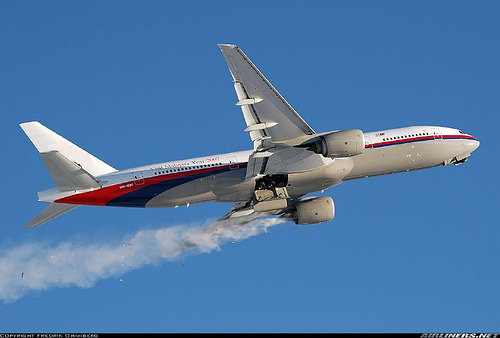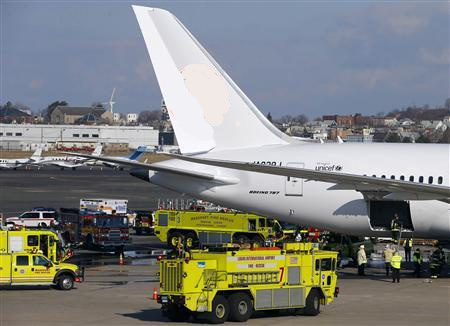A discussion on a Fear of Flying forum upon which I occasionally post raised a very interesting conversation regarding engine failures in airliners. The person who raised it had been on a flight which had an engine failure, resulting in engine parts raining down on the airport car park. The flight returned safely, as expected, but it was an understandably scary experience for the passengers.
I thought it may be interesting to run through, from a pilots perspective, what happens if an engine fails. This list is largely taken from my reply on that forum…
(I will warn you, up front, that if you prefer to think these things can never happen, then don’t read on. Having said that, the airline system is DESIGNED to handle such issues… the point of the post.)
Here’s a pilot’s perspective on such incidents, in a general sense…
1) Engines do fail from time to time, but not as often as they used to. Newer aircraft and companies that are rigorous in their maintenance and training have reduced the number of such events dramatically;
2) The airplane is designed to fly on one engine, and the pilots REGULARLY practice such maneuvers in full-motion flight simulators;
3) The pilots probably would have received a fire warning on their instruments for that engine, and possibly some vibration indications. They would have had no doubt that the engine had failed, and would have immediately begun their trained process for handling the fire/failure.
4) in the event of an engine fire, the engine has built-in fire extinguishers that can be activated by the pilots.
5) the engines are mounted under the wing and, while preferably they stay attached, they are designed to separate should the damage be sufficient. That is a built-in safety feature… The pilots do not have a “jettison engines button”, nor is there such a button in the armrest of your seat! 😉 (Having said that, it sounds like in your case only some internal parts of the engine separated, not the whole thing).
6) with a fire, particularly if the pilots did not have clear indications that it was out, their focus would be landing as soon as possible. This might involve a fairly quick return to the airport, but would not involve unusually steep turns. Having said that, if they had kept their speed back in preparation for a landing rather than accelerating to cruise speed the “bank angle” for a normal turn is higher ( maybe 20-25 degrees of “tilt”). This can feel steeper to a passenger, for various reasons.
7) The pilots probably called “mayday” to ensure priority handling from air traffic control (ATC). In this event ALL other aircraft stay out of the way, and the pilots can, essentially, fly WHEREVER they want. They will have priority, and ATC will do everything they can to assist.
8) It is standard practice to call out the ground fire crews in such an event, to get an external assessment of damage after landing and as a precaution against a fire still burning and/or leaking liquids from the aircraft. The aircraft may stay on the runway after landing, or taxi off onto an adjacent taxiway while the fire crews take a look. They may then, depending on the situation, need towing either to the gate or to an out-of-the way part of the airport (depending on the assessed damage).
From a passengers’ perspective the presence of fire engines around the aircraft after landing could lead you to believe the situation was more serious than it really was. It does not, necessarily, mean there is a fire!
9) Sounds like the pilots did a good job!
10) Pilots are aware that passengers will fear the worst in an unusual event and will , if time allows, generally make some kind of PA announcement to keep you informed. Having said that, their priority is flying the plane. It can be a little busy initially in the cockpit handling such issues, so it might be a little while before they talk to you. This will doubtless feel like a long time to the passengers!
11) like I said, a rare occurrence but all part of a professional pilot’s training.
12) it probably seemed worse than it was! The apparent lack of news about it would support this view, but no surprise that it got your attention.
Often there is a human element as part of the cause, be it a maintenance problem or a design or manufacturing defect. Airline management can contribute, positively or negatively, to these factors.
The takeaways of this are many… but a main one is the observation that, yes, machine components sometimes fail and then it is handled. It doesn’t happen often but it can happen.
System redundancies and training are designed to mitigate the risks of component failures so that overall system integrity/safety is maintained.
No one shrugs this stuff off!
In the Fear of Flying context I think it is important to consider that ALL activities in life have some risk. In practice the risk in airline aviation is EXCEEDINGLY small, and getting smaller year by year (I’m sure you know this 😉 ). Your job, of course, is to realistically balance risk versus reward. And, of course, moving from “perceived risk” toward “actual risk” in your assessment will be helpful.
(We, as humans, really only tend to base our decisions on perceived risk.)




At last you are here. Be bold. Sieze the moment. Be the first to take the opportunity to post a comment here.
We have beeen waiting for you to arrive here to provide your feedback. Now that you are here, go ahead and post a quick note. We would appreciate it.